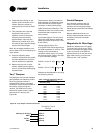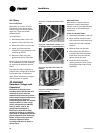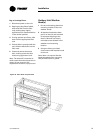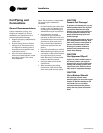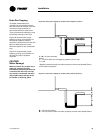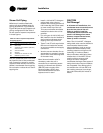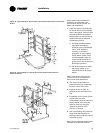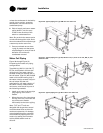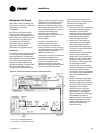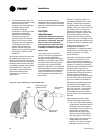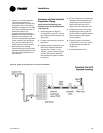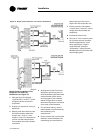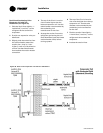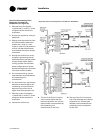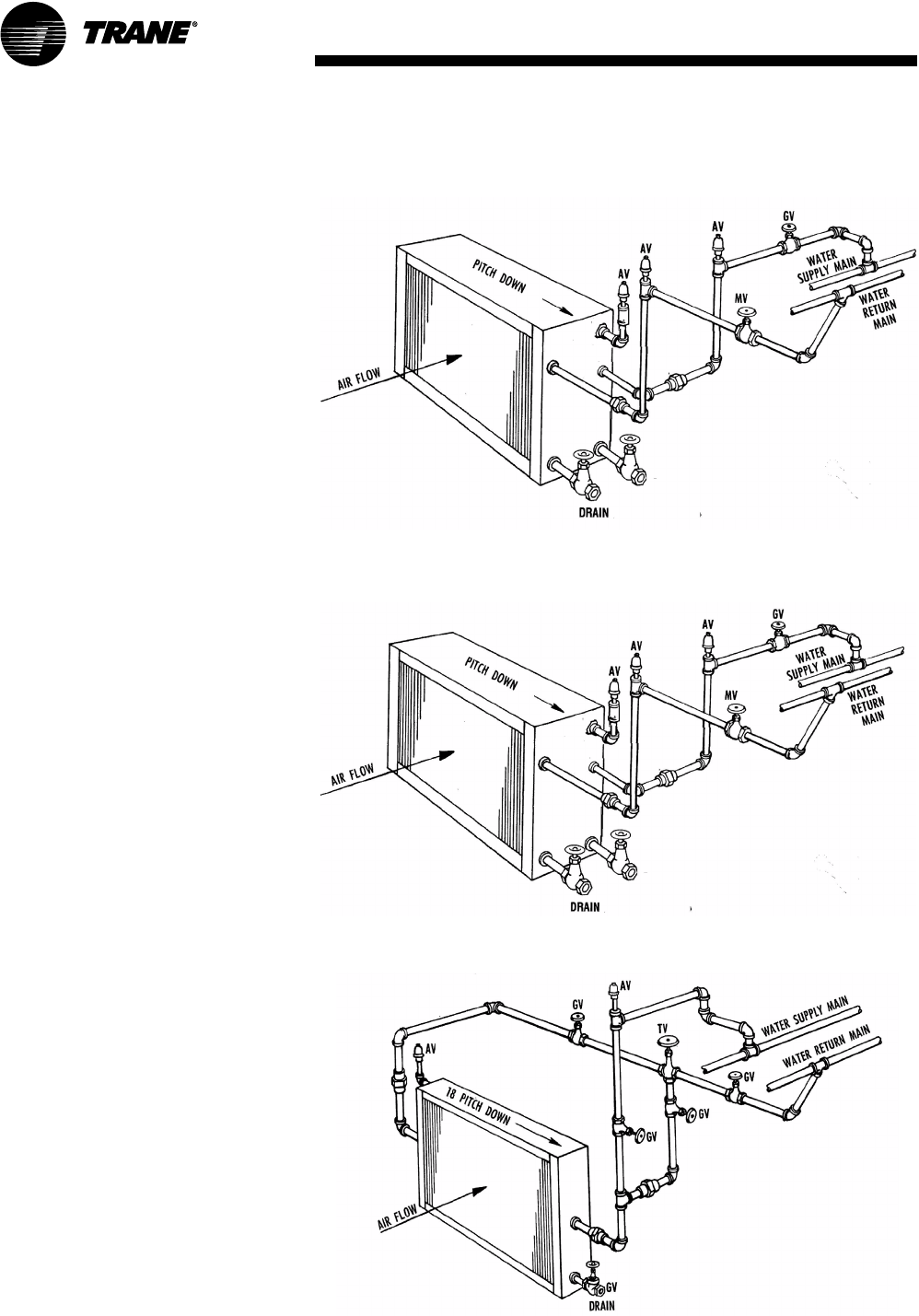
Installation
32 CAH-SVX01A-EN
unless the condensate is drained by
gravity into a receiver, vented to
atmosphere, and returned to the
condensate pump.
6 Pitch all supply and return steam
piping down 1 inch for every
10 feet in the direction of the
steam or condensate flow.
Note: Do not drain the steam mains
or take-offs through the coils. Drain
the mains ahead of the coils through
a steam trap to the return line.
7 Ensure overhead returns have
1 psig of pressure at the steam
trap discharge for every 2 feet of
elevation for continuous
condensate removal.
Water Coil Piping
Figure 30 through Figure 32
illustrate typical water coil piping
configurations.
Type WA, 5A, 5W, D, K, W, UW, TT,
P,2, P4, and P8 water coils are self-
venting only if the water velocity
exceeds 1.5 feet per second (fps) in
the coil tubes. Type UU, WD, and 5D
water coils are self-venting only if
the water velocity exceeds 2.5 fps in
the coil tubes. See the unit
submittals for coil water velocity. If
the water velocity is below these
minimums, vent the coil by one of
the following methods:
• Install an air vent in the top pipe
plug tapping of the return
header.
• When the return line rises above
the top of the coil, vent from the
top of the return header
horizontally to the return piping.
Note: T, ST, and TT coils are
designed with larger than normal
end tube sheet holes to allow for
maximum expansion. Air leakage
around tubes should be expected
and handled by capping over coil
ends or by sealing around tubes
with a pliable sealant such as
silicone.
Figure 30. Typical piping for type 5W one-row water coil
Figure 31. Typical piping for type 5A, 5W two-row, K, W 3- to 12-row, WD, D, and
DD water coils
Figure 32. Typical piping for type W or WA 1-row water coil




